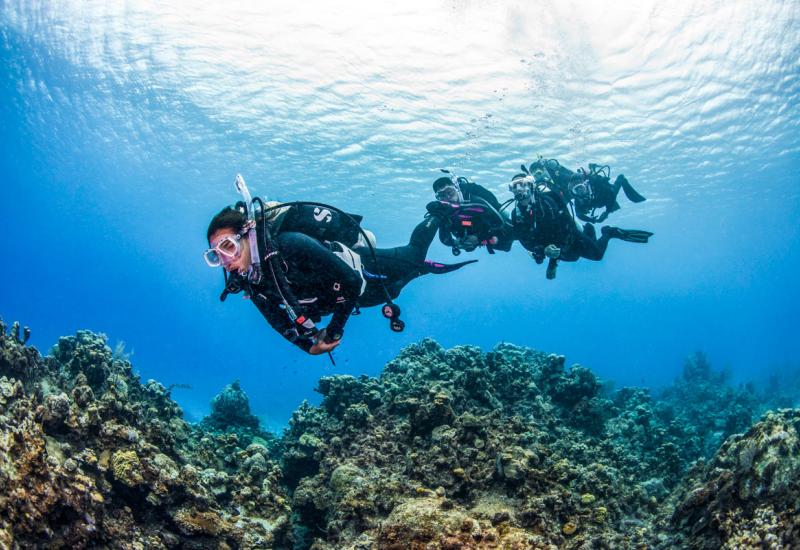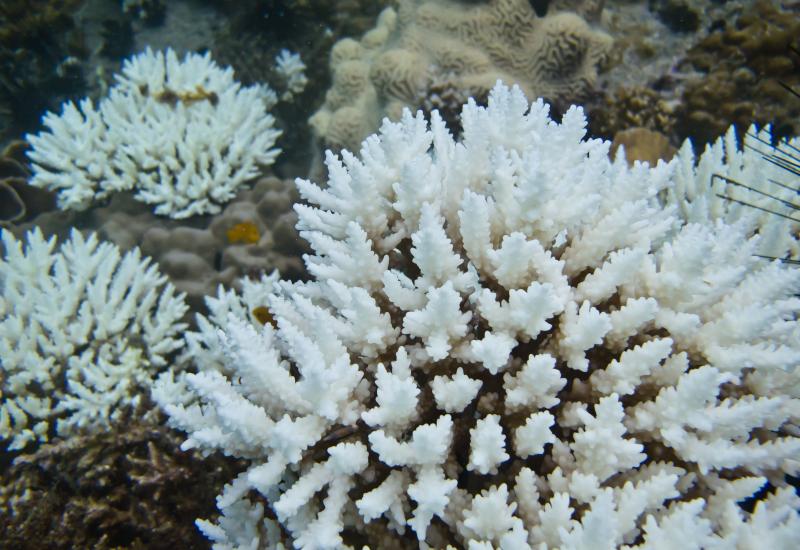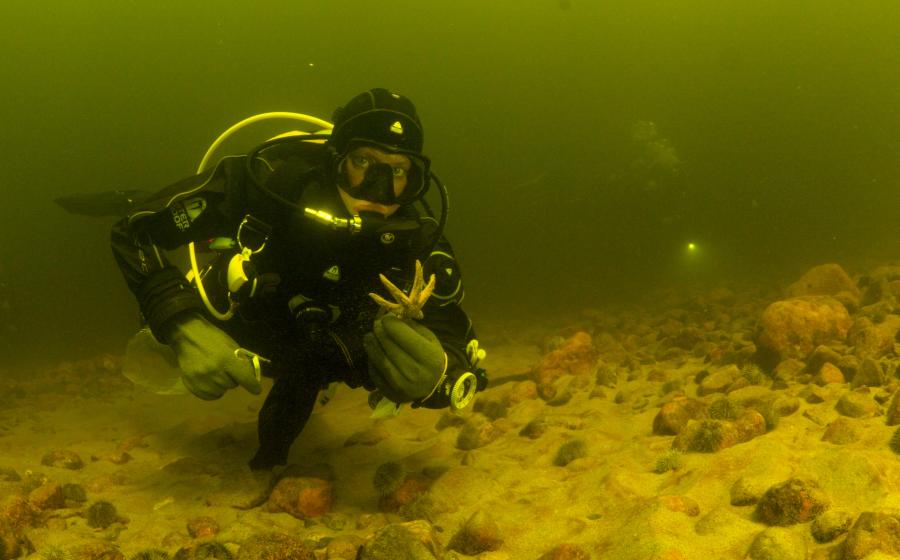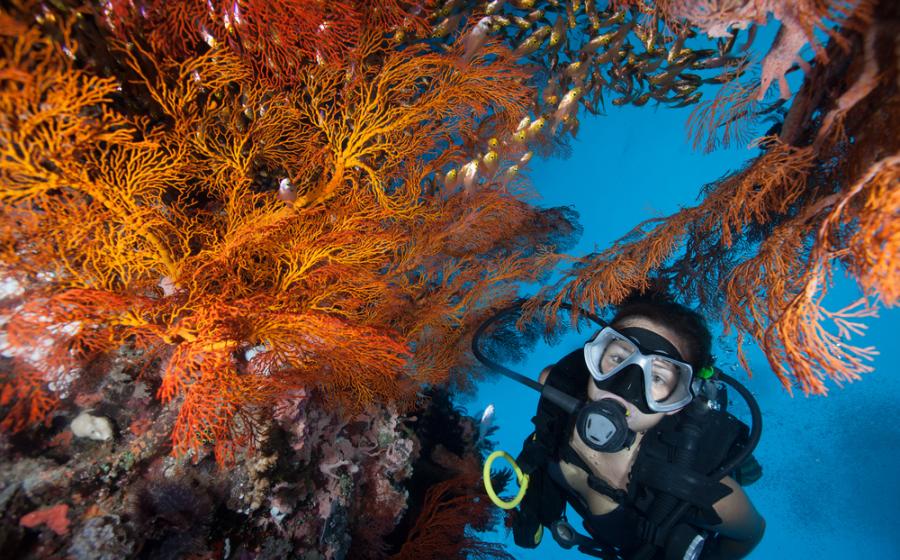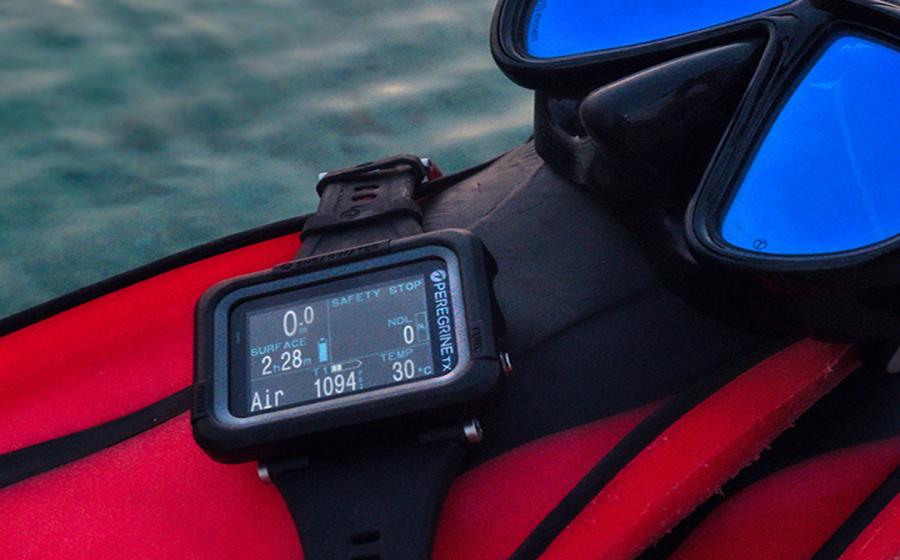Scientists Race to Figure Out Why Grey Whale Deaths are Spiking
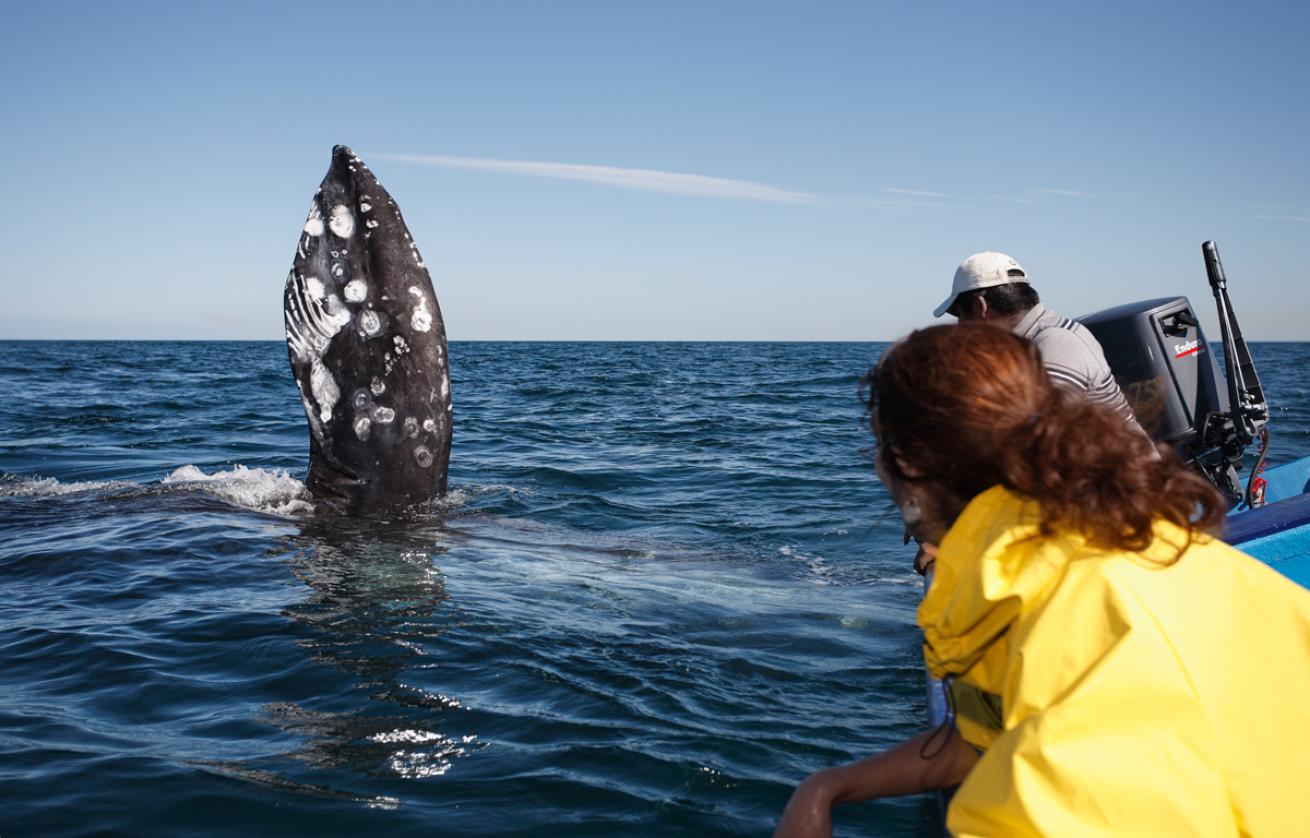
Brandon ColeA gray whale raises a pectoral fin out of the water in Baja California, Mexico.
Isla Santo Domingo, one of several barrier islands between southern Baja California’s Magdalena Bay and the Pacific Ocean, is uninhabited. Except in winter.
From January to April, groups of people occupy rows of tents set up against the wind-sculpted sand dunes, hoping for a chance to glimpse the hundreds of gray whale mothers and calves that come to winter in the bay. A similar whale-watching camp pops up in Laguna San Ignacio, almost 200 miles to the north.
These human visitors spend several hours each day in small boats known as pangas in order to see the whales up close. The pangeros from nearby Puerto Lopez Mateos who drive the boats have an eye for spotting surfacing whales while keeping a respectful distance. People often see the whales right from the beach as well.
The place feels like a small slice of paradise—the tranquil bay, pristine dunes, starlit nights and gentle giants.
But trouble has come to paradise. Scientists are reporting fewer calves, emaciated adults, and even some dead whales stranded on the beaches here.
Unusual Whale Mortality
In fact, an alarming number of gray whales have died all along the Pacific coast of North America in the past few years—517 deaths recorded between January 2019 and March 2022. Previous research indicates that only about 10 percent of whales that die drift ashore where they can be counted, meaning that the actual number of deaths is likely much higher. The U.S. National Oceanic and Atmospheric Administration declared an Unusual Mortality Event, or UME, defined by the U.S. Marine Mammal Protection Act as a significant die-off of a marine mammal population that demands immediate response.
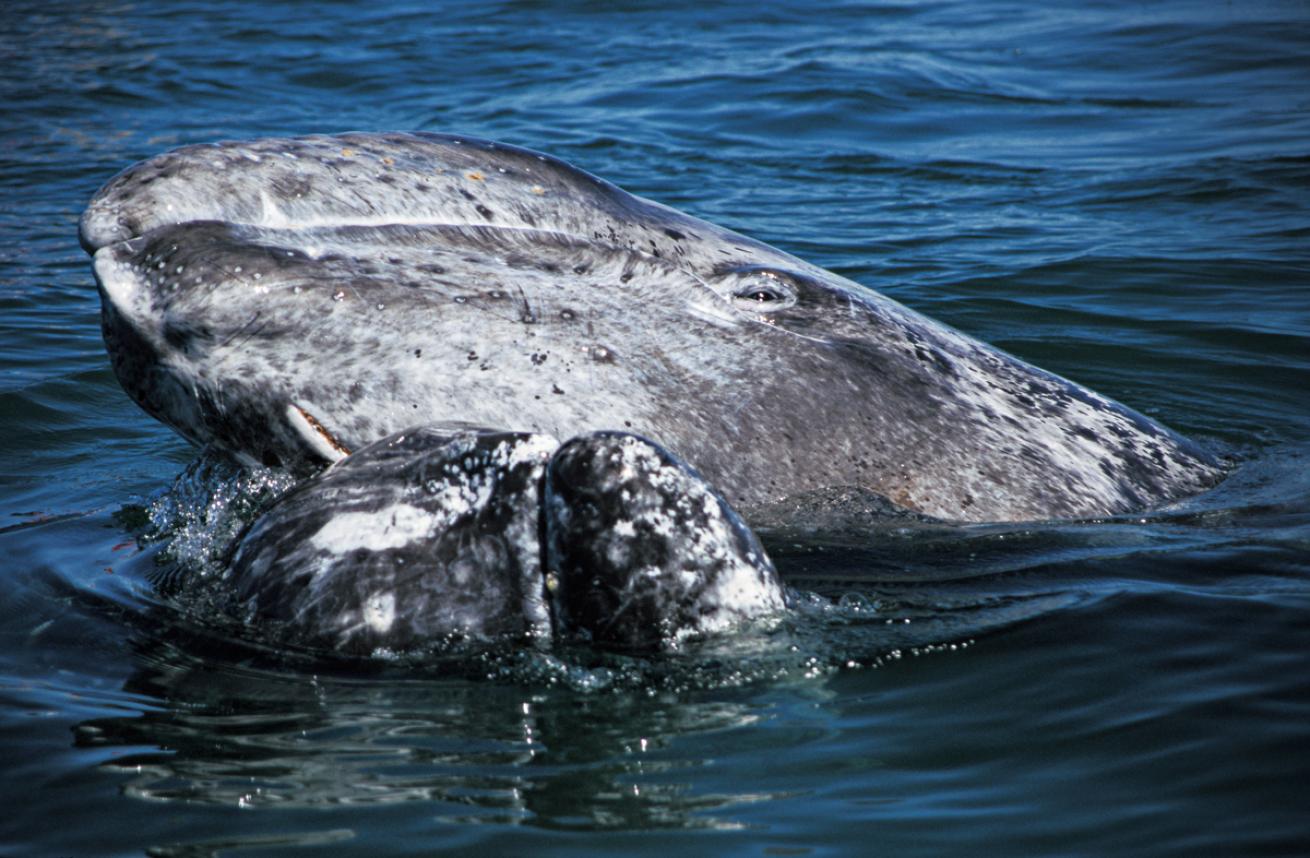
Brandon ColeGray whales make a yearly Pacific migration to winter and birth calves in Baja California.
These baleen whales (Eschrichtius robustus), which grow up to 50 feet long and weigh 40 tons, once roamed waters throughout the Northern Hemisphere. Now they are regularly found only in the North Pacific—one population in the east and another in the west.
“The [gray whales’] mortality and poor body condition is because they don’t feed enough. The question is, why don’t they feed enough?”
The eastern North Pacific population makes one of the longest annual migrations of any mammal, a round trip of up to 14,000 miles along the West Coast of North America from summer feeding grounds in the Bering and Chukchi seas to their wintering and calving areas in Mexico. The animals spend from May to October feeding to build up large energy reserves in the form of blubber. These reserves must sustain them during migration and breeding, when they do not feed. Calves conceived during the previous year’s migration are born in the lagoons in Mexico during winter. Mothers stay in these protected waters raising their calves until mid-February, then migrate back northward with their growing young. The mothers, the last to depart, are running low on energy reserves and thus more susceptible to negative human interactions such as ship strikes and fishing gear entanglements.
Scientists began researching and monitoring gray whales in Laguna San Ignacio in 1977. In 2006, the Ocean Foundation, in partnership with the Universidad Autónoma de Baja California
Sur (UABCS) and several institutions in the United States, founded the Laguna San Ignacio Ecosystem Science Program (LSIESP). Jorge Urbán, a professor at UABCS and part of LSIESP, participates in a monitoring program that has conducted a weekly census of whales in the lagoon during the breeding season since 1996.
“The basic goal is to see how the numbers change, when they reach a peak and then decrease,” Urbán says. “We compare peak numbers and changes in arrival and departure times year to year, counting mothers with calves and adults without calves, or singles.” The team conducts this census from boats. In 1997, it also began evaluating the condition of whales here, sending out drones to take photographs of the animals from above, then using the photos to measure the length and width of individual whales and determine their relative body condition or amount of blubber reserves. Urbán is a co-author on a recently published scientific paper, based on this work between 2017 and 2019, which revealed a noticeable decline in the body condition of juvenile and adult whales.
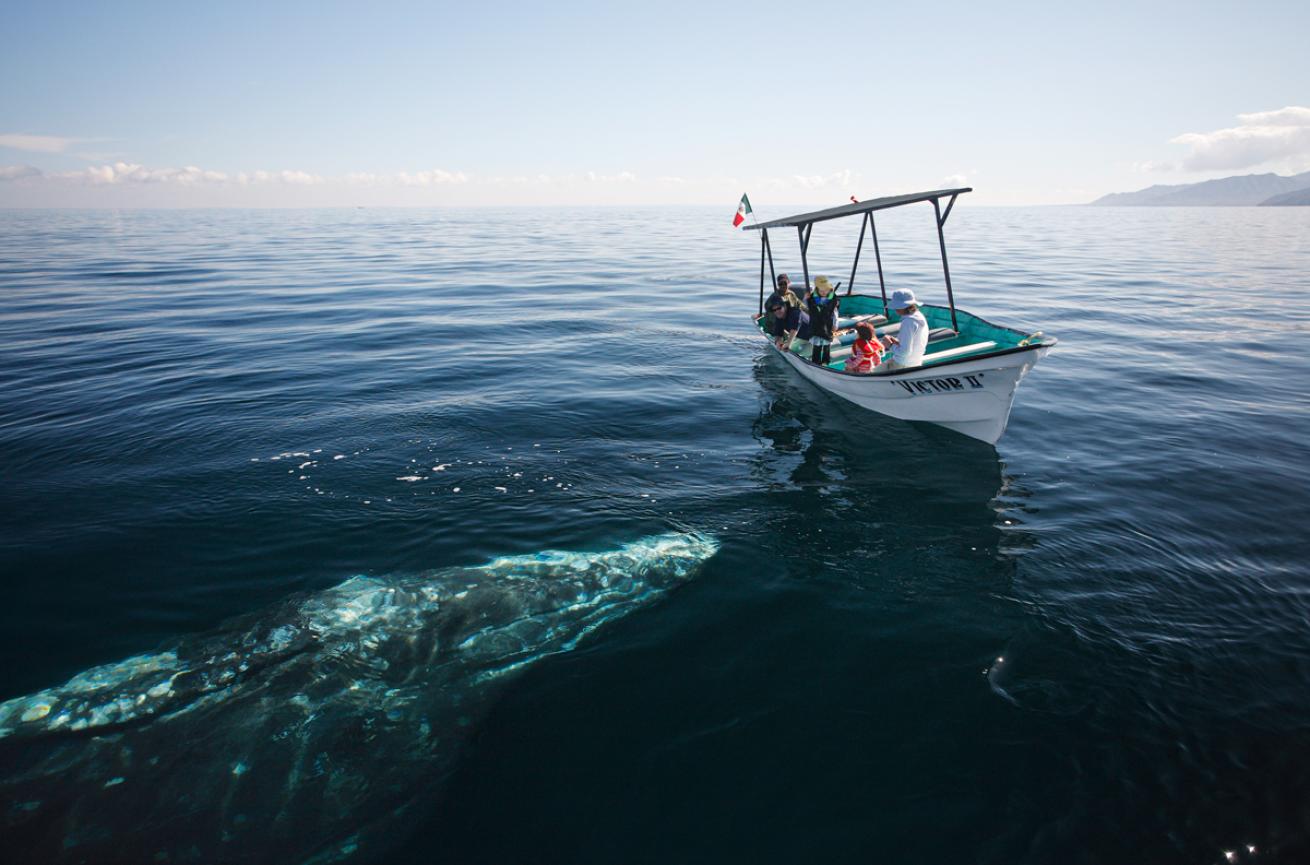
Brandon ColeA gray whale approaches a boat in Magdalena Bay, Baja California, Mexico.
An inadequate supply of prey in their summer feeding grounds would explain both this decline in body condition and the decrease in the number of calves. The whales mainly feed on amphipods, which have declined in abundance and biomass in the Bering Sea since the late 1980s. Warming of Arctic waters, due at least in part to human-induced climate change, is likely a cause of that decline.
“The mortality and poor body condition is because they don’t feed enough,” says Urbán. “That is clear; it has happened. The question is, why don’t they feed enough? Is it a decrease in prey or a change in its distribution? And if so, did that happen because of changes in oceanographic conditions, or water temperature? We need to figure out what exactly is happening, and how long will it take gray whales to recover, or even if they will recover.”
Along the U.S. coast, some but not all of the whales examined during the current UME have had evidence of emaciation or lack of blubber reserves. “There have been a number of different causes of deaths, not just one clear explanation of why we are seeing more whales dying,” says Michael Milstein, spokesperson for NOAA Fisheries West Coast Region. The response team uses a detailed protocol that includes taking body measurements and tissue samples and testing for diseases. The Marine Mammal Center in San Francisco is a member of a stranding network established by the U.S. Marine Mammal Protection Act and coordinated by NOAA. Its pathology team conducts necropsies on whales that strand within its range, typically seeing five to six whales per year, mostly in spring when the whales are migrating north. But between April and June 2021 alone, the team responded to 14 dead whales in the Bay Area.
The most common causes of death identified during the current UME include malnutrition, ship strikes and entanglement in fishing gear, says Kathi George, director of field operations and response at the Marine Mammal Center. Entanglement can kill whales directly through drowning or suffocation. It also can injure whales or interfere with feeding, causing slow and painful death. Other known causes of whale deaths include harmful algal blooms, infectious disease and natural predation.
Looking at the bigger picture, gray whales are a success story, Milstein points out, a testament to the effectiveness of the Endangered Species Act and the Marine Mammal Protection Act. The eastern North Pacific population of gray whales was listed as endangered in 1970 and delisted in 1994 after the population recovered. (The smaller western population remains federally endangered.) On average, roughly 29 gray whales stranded per year in North America during the 18 years prior to 2020.
The most common causes of death identified during the current Unusual Mortality Event include malnutrition, ship strikes and entanglement in fishing gear.
“We know how to recover populations of marine mammals if we provide sufficient protection,” Milstein says.
However, the population of gray whales that migrate along the West Coast has declined about 24 percent since 2016, to an estimated 20,580 whales. Milstein reports a similar decline (23 percent) occurred after a 1999-2000 UME that involved about 651 strandings. Scientists suspected starvation as the cause of that earlier UME, although they lack sufficient data to confirm their suspicions. The population rebounded following that UME and reached even greater numbers than before. But scientists wonder just how much these whales can take. And some hope people will do more to help.
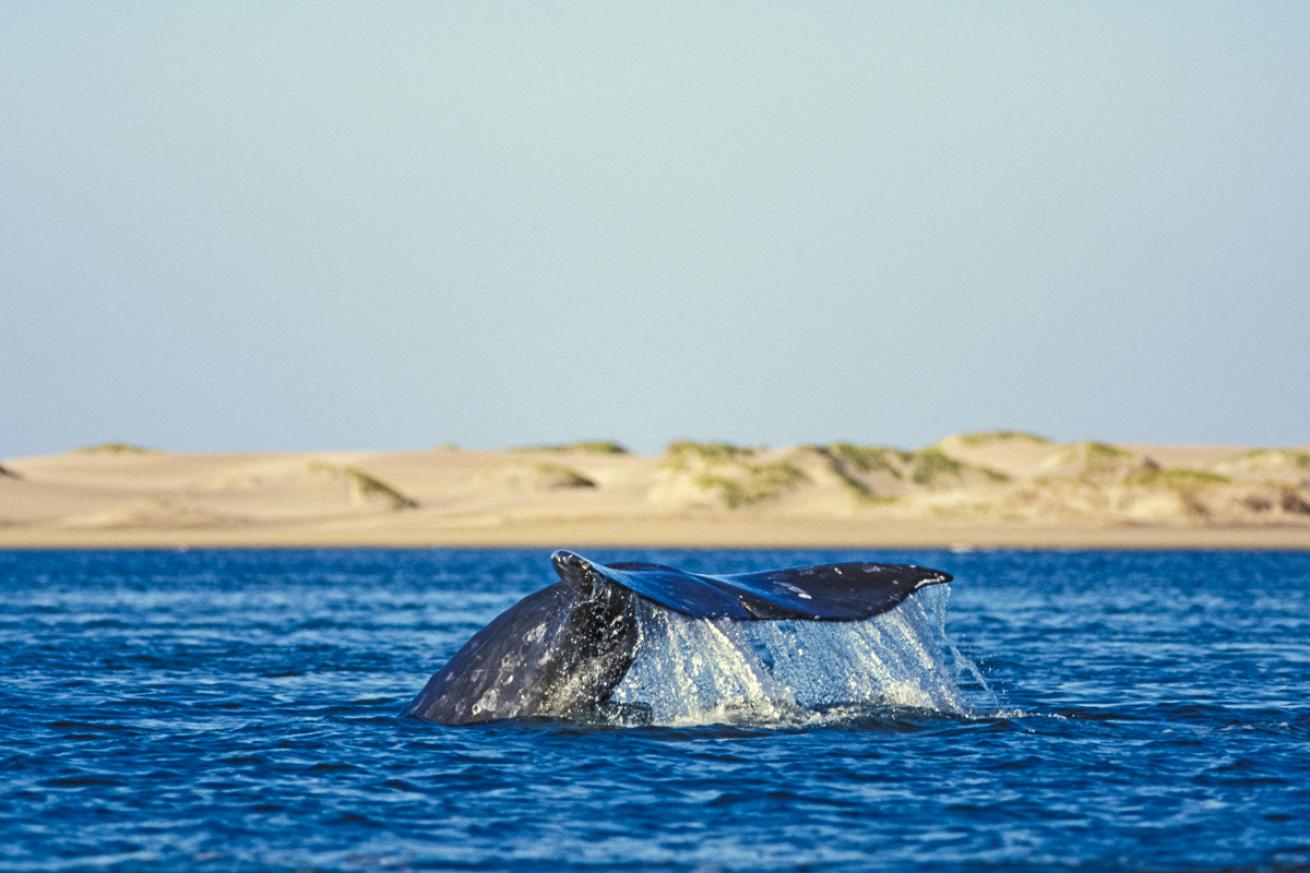
Brandon ColeThe population of gray whales that migrate between the Arctic and Baja, Mexico, has declined about 24 percent since 2016.
Saving Paradise
Climate change continues to warm waters in the Arctic, affecting the whales’ food supply. Changes in ocean conditions and prey distribution can cause whales to move into other areas, sometimes bringing them closer to human presence and increasing the risk of ship strikes and entanglement. Whales also can encounter more noise pollution and water pollution in these areas, both of which can cause stress and disease. In other words, if things are going to turn around for gray whales, it’s going to take human action.
To solve the malnutrition problem requires people, at minimum, to reduce their consumption, George says. “Every time we purchase something, it needs to make it to us somehow. Think about the energy to produce things we buy and don’t reuse.” People can also help by participating in programs to offset or compensate for their carbon footprint (see “What You Can Do,” below). But while such individual actions matter, addressing climate change requires systemic actions as well, primarily reducing use of fossil fuels on a global scale.
Protecting whales from ship strikes and entanglements is a bit more straightforward. In San Francisco Bay, the Marine Mammal Center shares whale sightings with the Coast Guard, which can alert vessels to keep an eye out to avoid them. In a sort of vicious circle, whales that are undernourished and therefore weaker can have a harder time getting out of the way of boat and ship traffic, George says. The California Ocean Protection Council (OPC) is working on a permanent, statewide vessel speed reduction program. Slower ship speeds have been shown to reduce strikes by allowing more time for vessel and whale to avoid each other. Designated shipping lanes and restricting ship traffic at certain times also have proved effective.
The Marine Mammal Center is working with the Dungeness crab fishery to reduce fishing gear entanglement in the Bay Area. Current regulations require that if a certain number of endangered species are seen in a zone, action must be taken, such as reducing fishing in the area or even closing it to fishing altogether. While gray whales are not endangered, and so their presence does not trigger such action, they benefit when other species do.
OPC is supporting a working group in California to test new designs for fishing gear that reduce entanglement threats. Options include using ropes strong enough for fishing needs yet not so strong that whales cannot break them. Research on the U.S. East Coast indicates that using ropes on lobster gear that breaks at 1,700 pounds could significantly reduce whale mortality from entanglement. Another option is developing gear that uses GPS and tracking technology instead of ropes. That approach also could reduce the amount of gear fishers lose to whale entanglements.
OPC also is funding the transition away from drift gill-net fishing. These nets hang from the surface down into the water column, creating a wall that entangles just about anything that comes along, including whales. When gill nets are lost or abandoned in the water, these so-called ghost nets continue to catch and entangle all manner of marine life. One solution is including identification on fishing gear so it can be traced back to its owner, and paying fishers to return or recycle nets they no longer need. Changes to fishing gear design and use only happen with the right regulations in place—and individuals can let their elected officials know they expect such regulation. Meanwhile, back in Baja California, both scientists and tourists continue to watch the whales.
There is still whale-watching in Laguna San Ignacio, Urbán says. In Magdalena Bay, however, the number of whales has decreased enough in some areas that it has affected the business. In both locations, guides have noticed the changes in the condition of the whales. “People who are doing the whale-watching know that something is happening,” he says. “They see skinny whales and some dead whales and they are worried. People ask us what they can do to help. Maybe we cannot go to the Arctic, but we can do something to help where we live. There are things we can and should do now.”
Before paradise is lost.
You can book a Baja California whale-watching trip to San Ignacio Lagoon with Baja Expeditions, or Magdalena Bay with Sea Kayak Adventures.
What You Can Do
Scientists believe human action is to blame for warming Arctic waters and the plight of gray whales in the Pacific Ocean. While curbing greenhouse gas emissions to mitigate climate change is going to take a coordinated global effort, there are things you can do on an individual level to reduce or offset your carbon footprint.
First and foremost, you can assess your own consumption habits. Fly less. Walk, ride a bike or use public transportation, and eat plant-based food whenever possible. Options to offset your carbon emissions include the Ocean Foundation’s SeaGrass Grow program, which uses donated funds to plant sea grass. Absorbing and storing up to 35 times more carbon from the atmosphere per square meter than tropical rainforests, sea grass also provides important marine habitat. SeaTrees, a similar initiative, uses offset funds to plant mangroves, another coastal habitat that efficiently sequesters carbon.
You can also take direct action to report a whale that is stranded, in distress or entangled. In California, Oregon, or Washington, call the West Coast Marine Mammal Stranding Network at 866-767-6114. In Alaska, call the Alaska Marine Mammal Stranding Network, 877-925-7773. In Canada, the British Columbia Marine Mammal Response Network, 800-465-4336.

